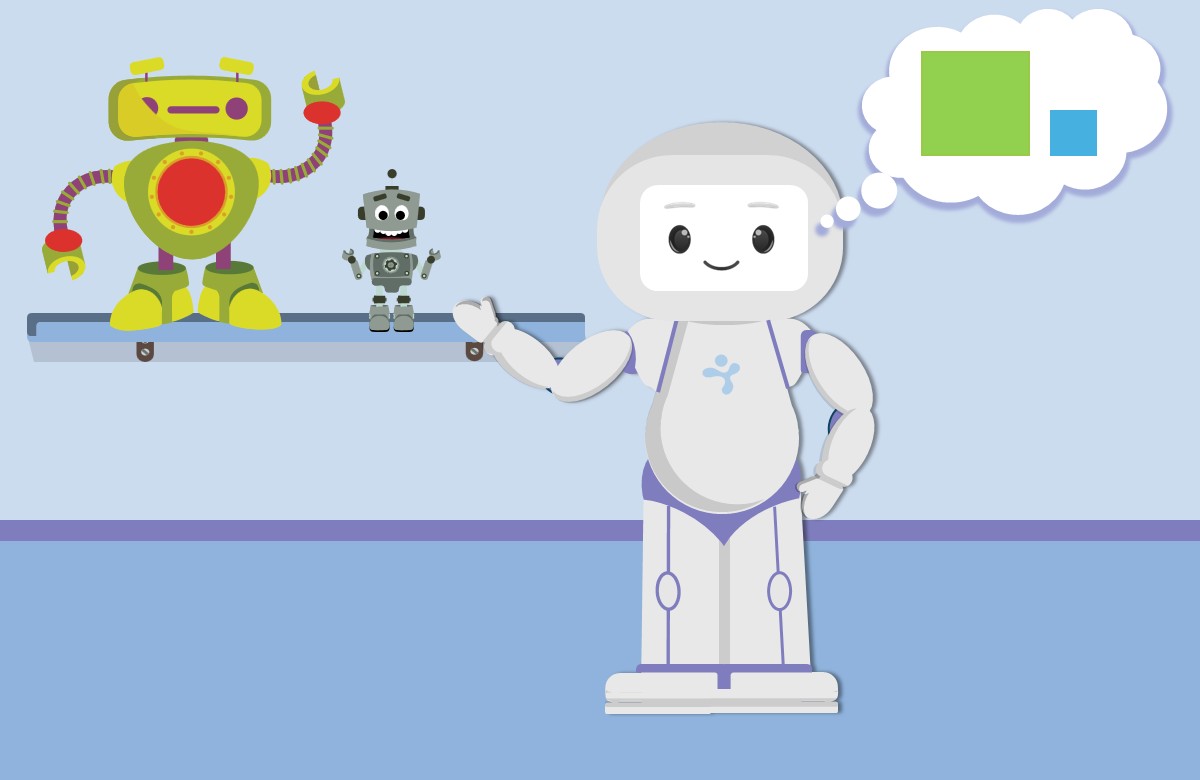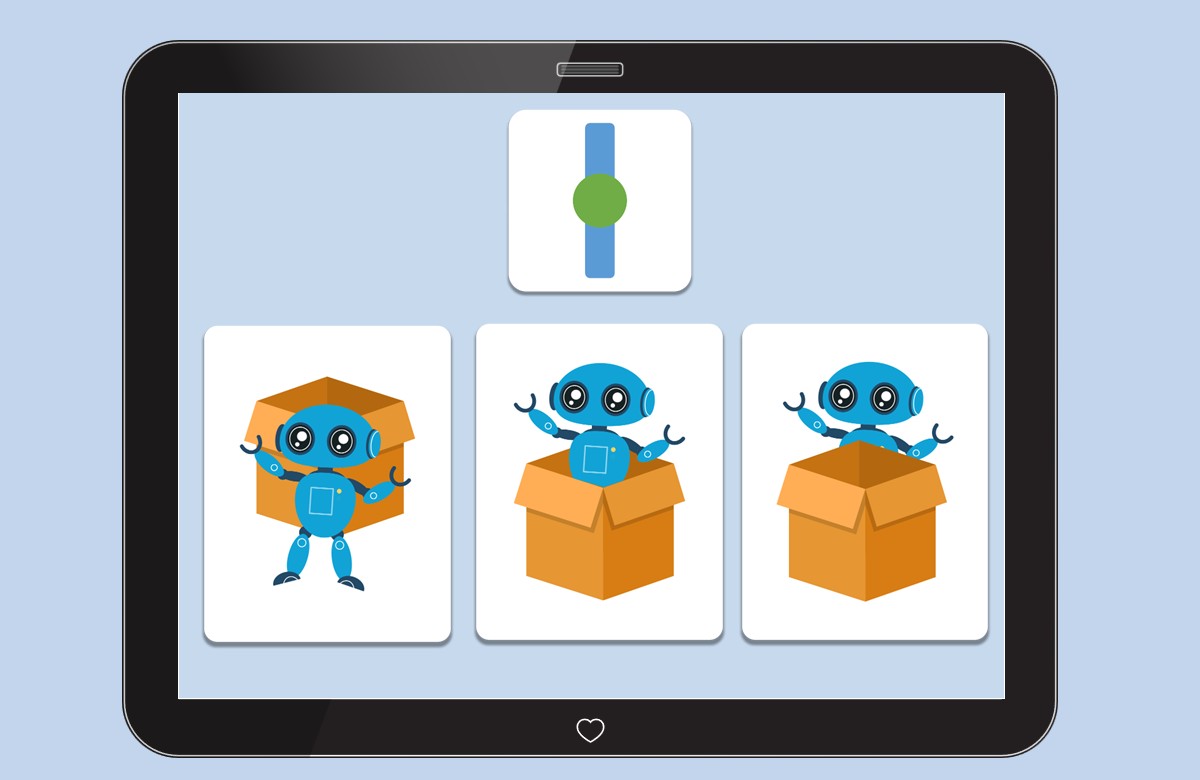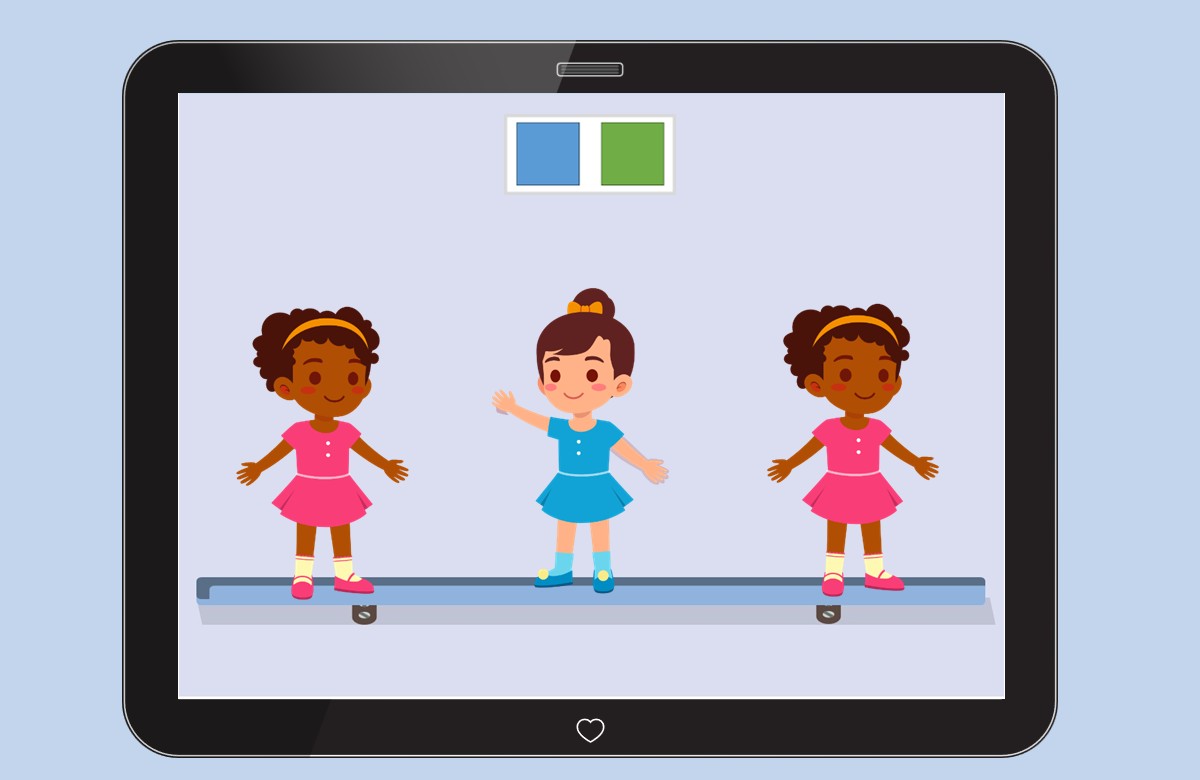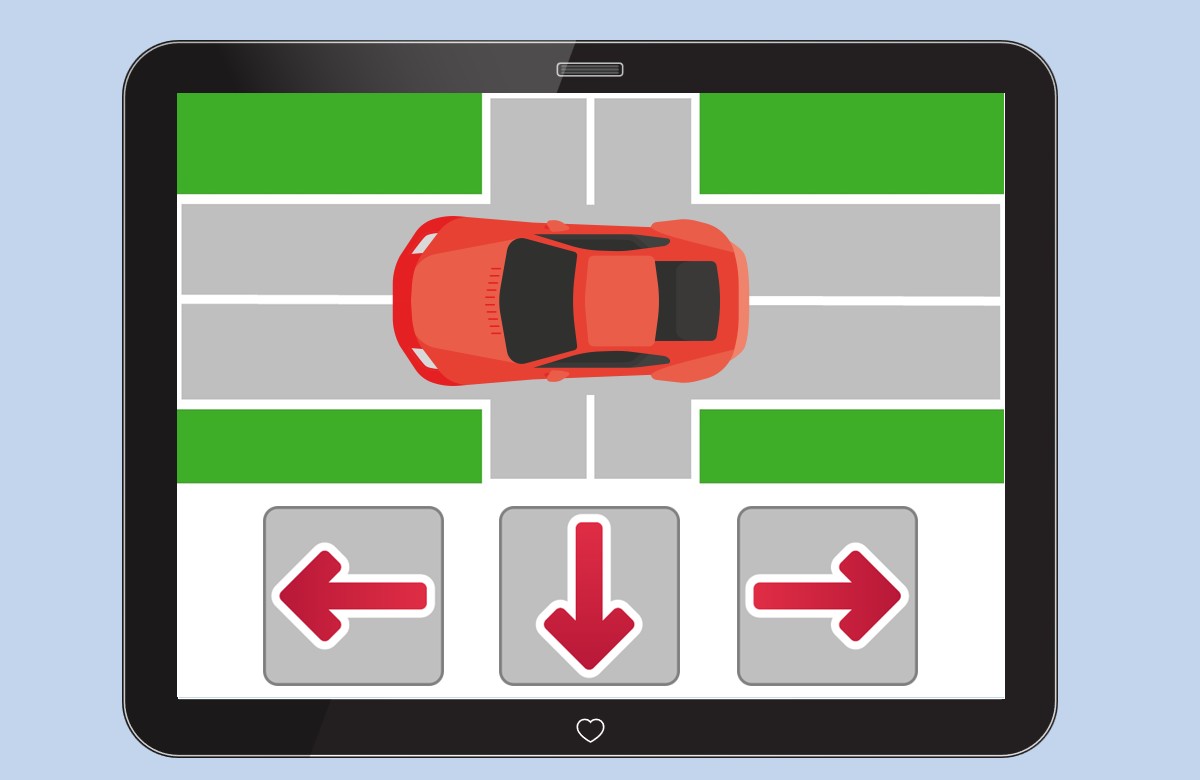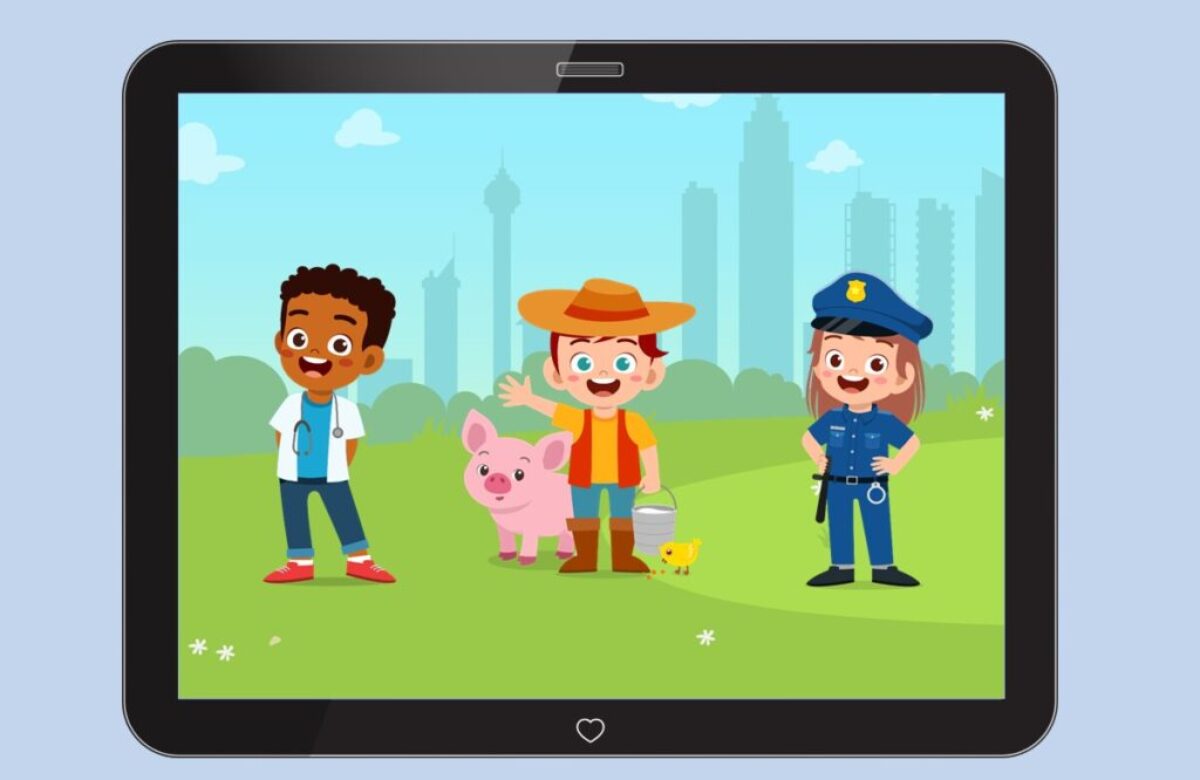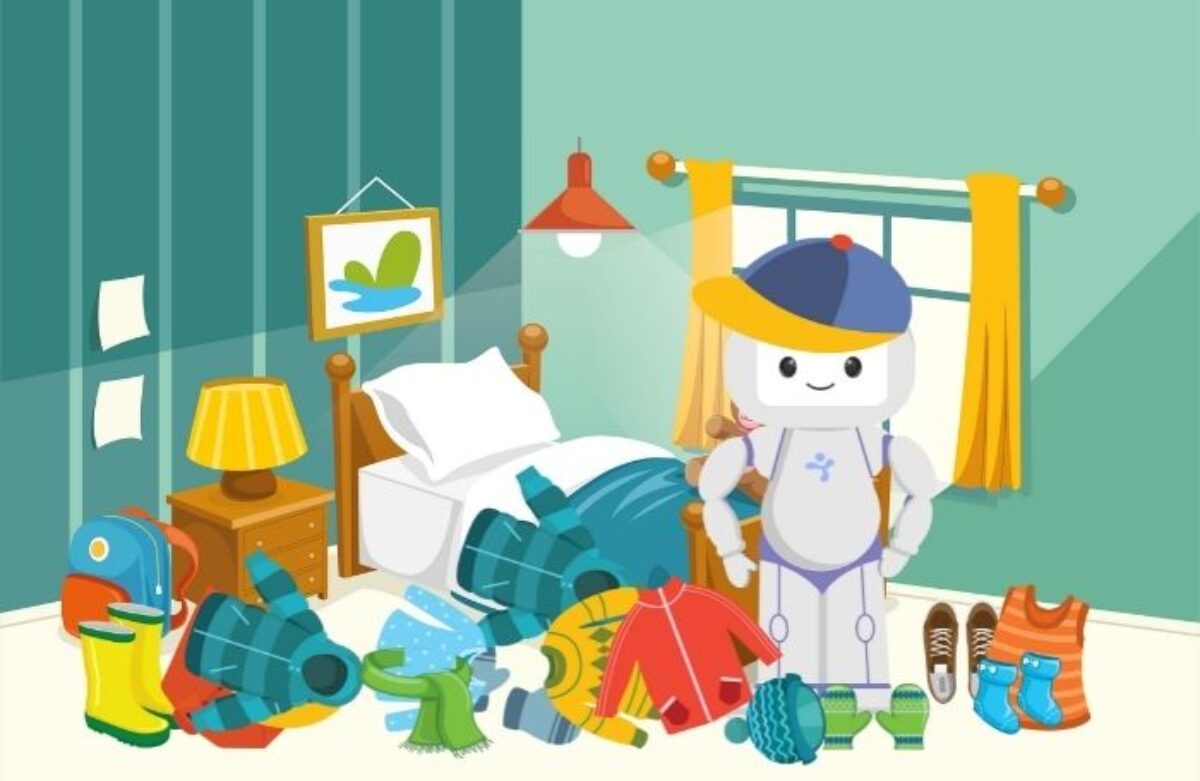This curriculum is designed to support the early intervention for children with autism and other developmental delays.
Topics Covered: Social, receptive language, expressive language and cognitive milestones of the first 4 years of life
Number of Units: 230
Age range: 1-5 years of development
–> Included in the home and school subscription plan!
QTrobot Early Stage Development Curriculum Description:
QTrobot Early Stage Development Curriculum for autism spectrum disorder and special needs education focuses on teaching skills related to the early age development of children in an engaging and step by step manner. The curriculum is organized around 5 main levels, based on Developmental Milestones defined by CDC covering the developmental age of up to 5 years.
Each level is broken down into several units covering a variety of skills related to social, cognitive and language development. In each unit, QTrobot practices a new skill over a variety of stimuli and provides the learner with multiple trials to support skill mastery. The skills are then repeated in subsequent units to support the maintenance of the learnt skills.
In addition, QTrobot also actively involves the trainer in the sessions to facilitate the generalization of the skills and support the development of social interaction and collaborative play between the child and the trainer.
Who Can Benefit from QTrobot Early Stage Development Curriculum?
The application of this curriculum is not limited to the learners on the autism spectrum. Individuals with other learning difficulties can also benefit from it.
The curriculum can be used for the learners in the pre-school, primary or secondary school age as long as their developmental age and current learning objectives match this curriculum. This curriculum can be used in special need education settings, as well as in mainstream schools to boost the learning potential and help the learners master social, cognitive and communication skills.
Here are some examples of the early-stage development curriculum:
Examples of Social Skills Activities Included in the QTrobot Early Stage Development Curriculum
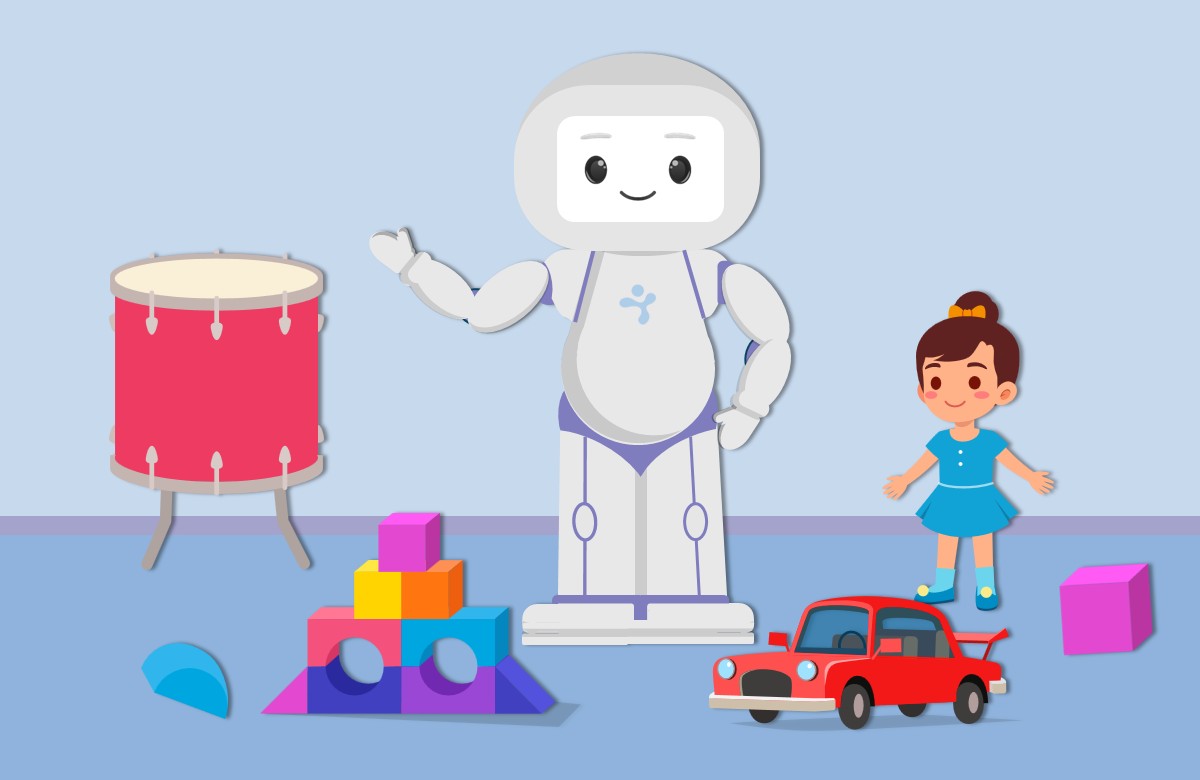
Social Skills, Level 1, Unit 3 - Imitation of one-step action on objects
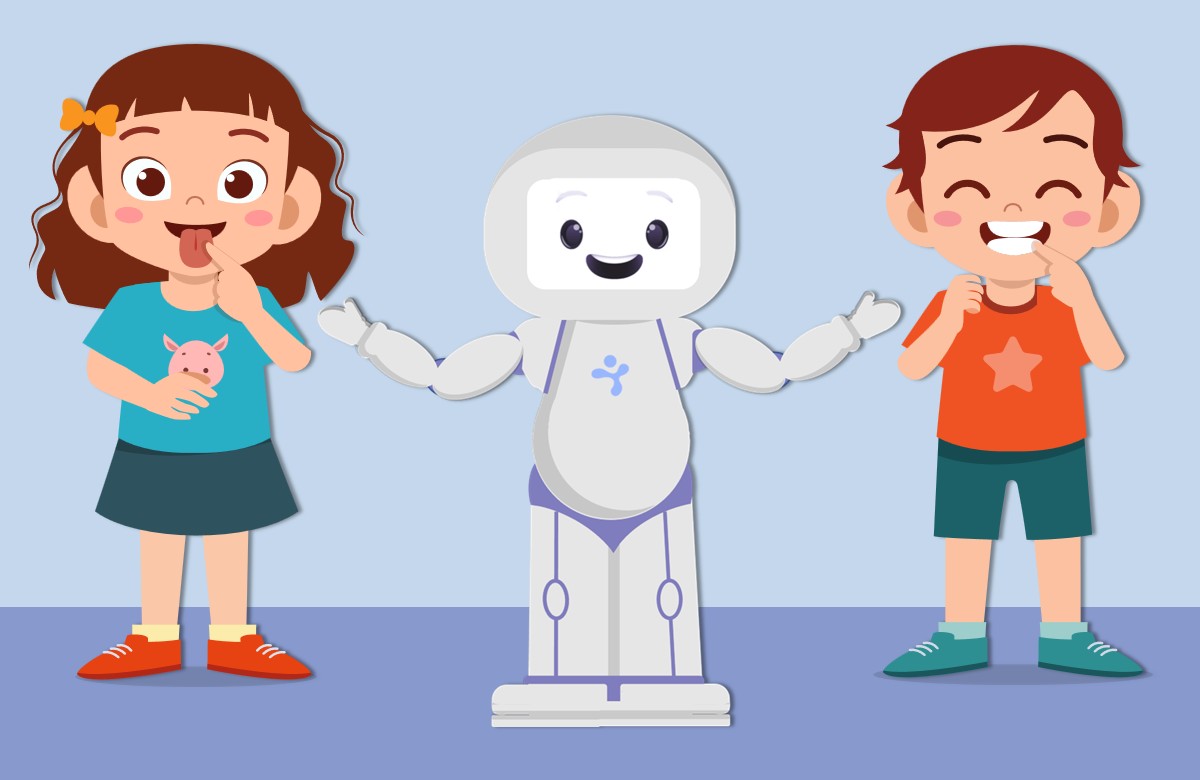
Social Skills, Level 2, Unit 7 - Following one-step directions
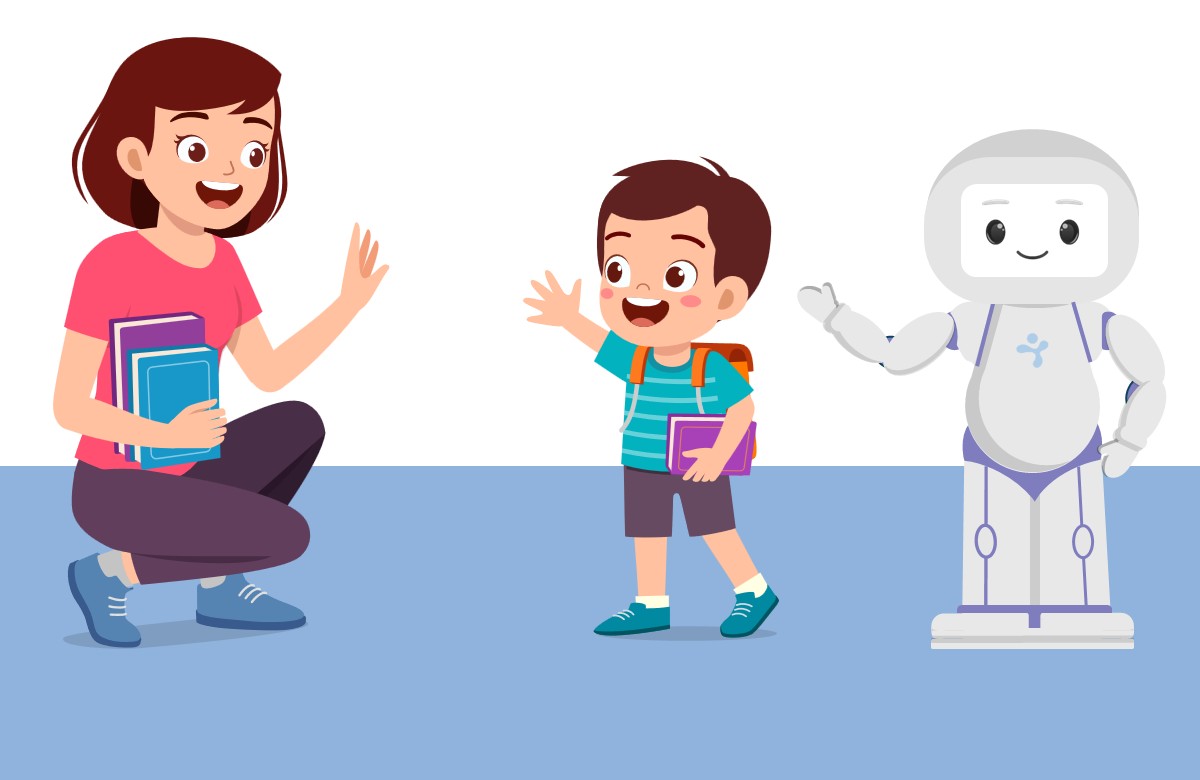
Social Skills, Level 2, Unit 3 - Respond to greeting by waving and saying hi
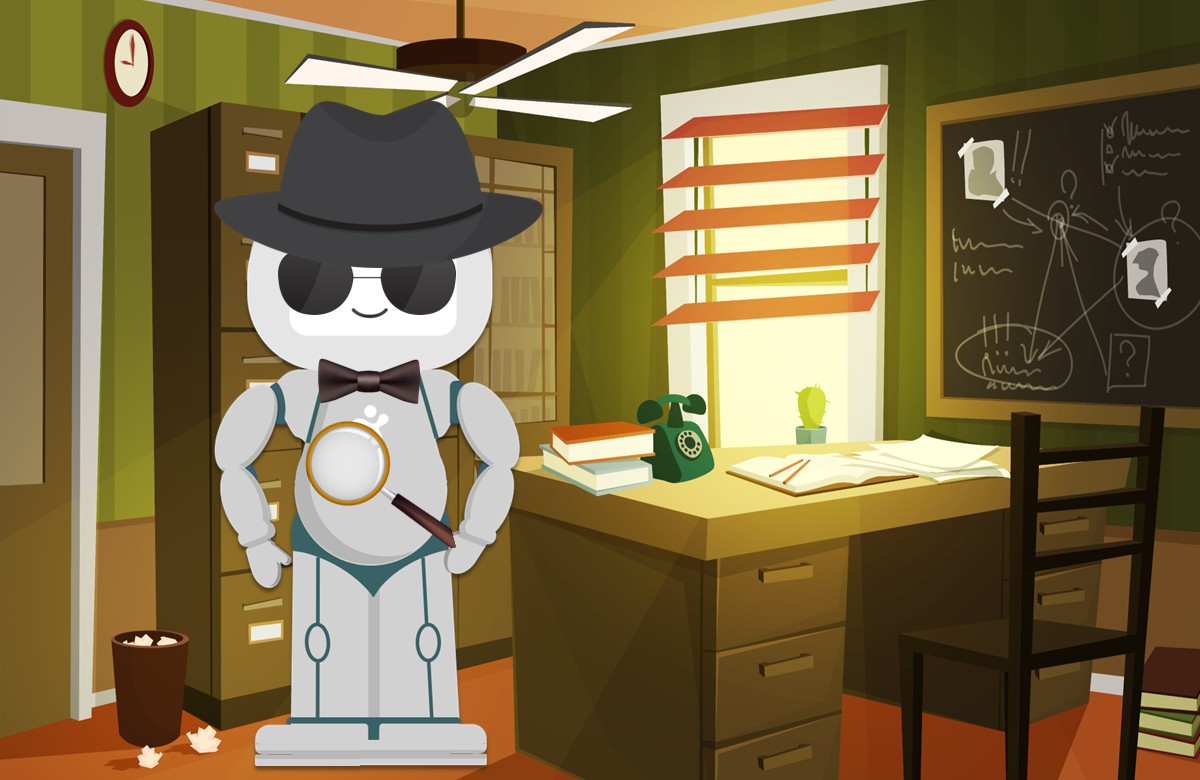
Social Skills, Level 3, Unit 1 - Answering basic social questions
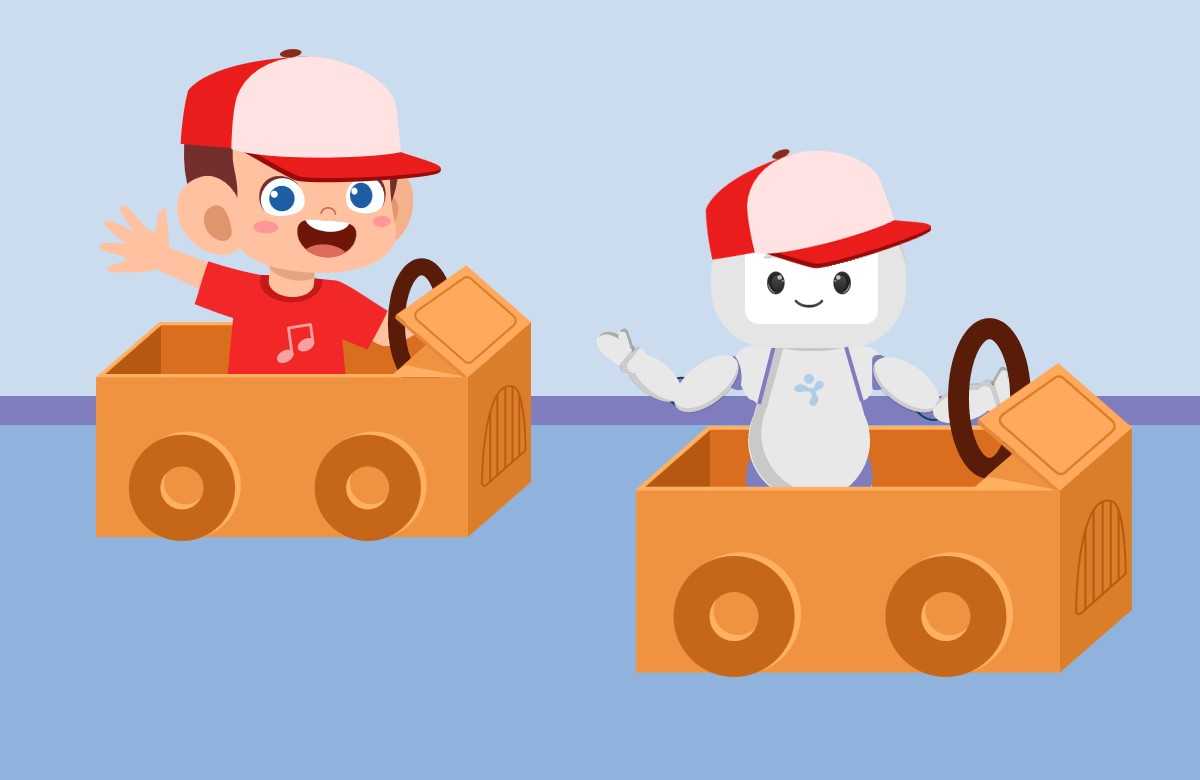
Social Skills, Level 2, Unit4 - Pretend play on self
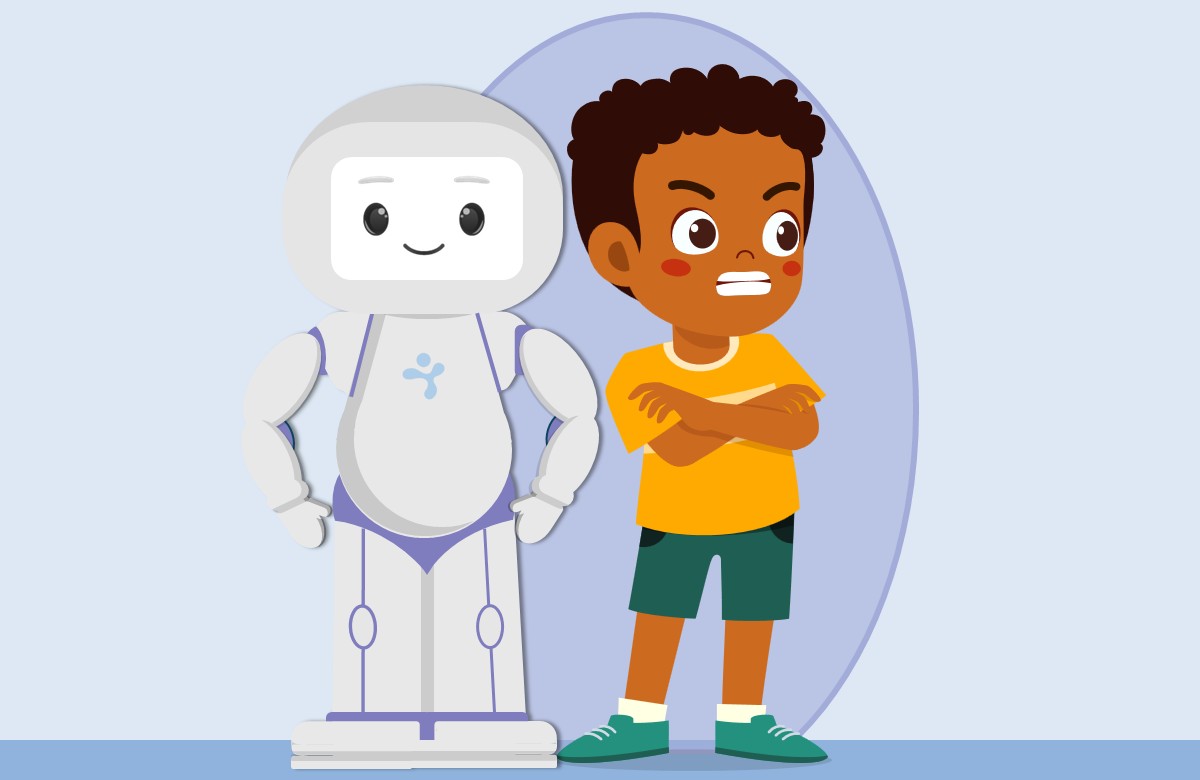
Social Skills, Level 4, Unit 2 - Personal distance
Examples of Language Development and Speech Activities Included in the QTrobot Early Stage Development Curriculum
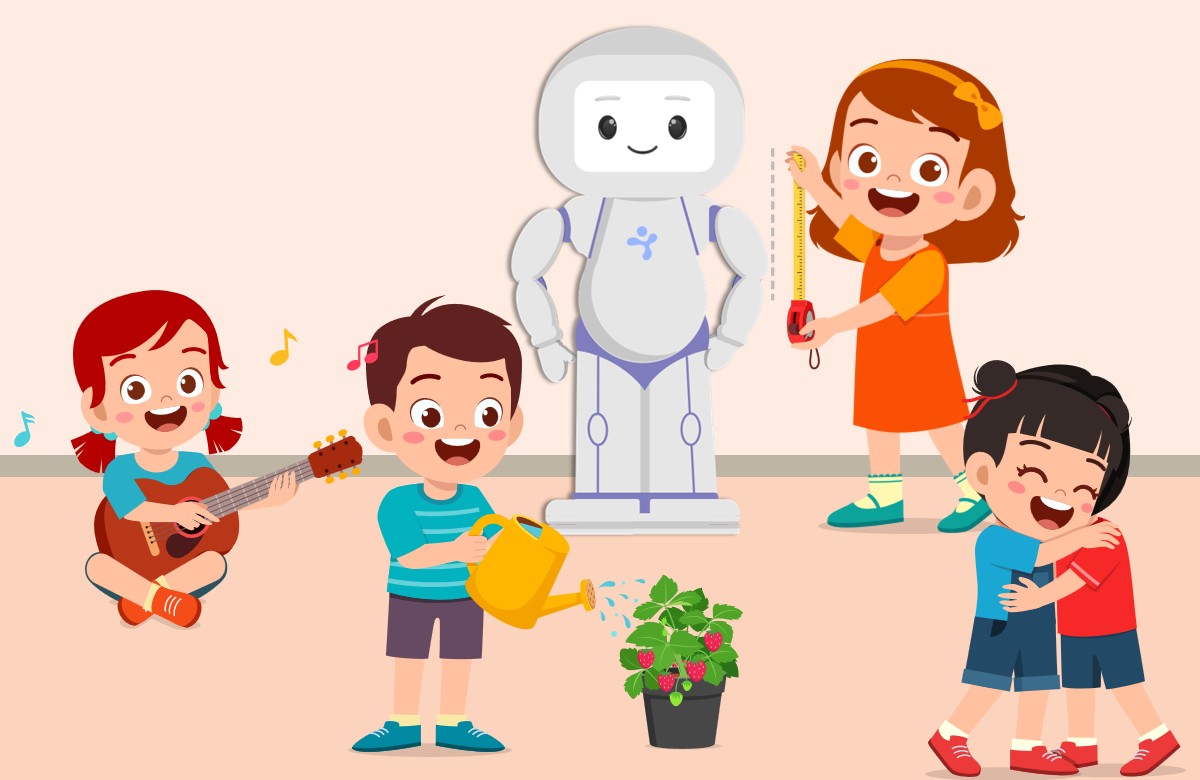
Receptive Language, Level 3, Unit 5 - Identification of action verbs
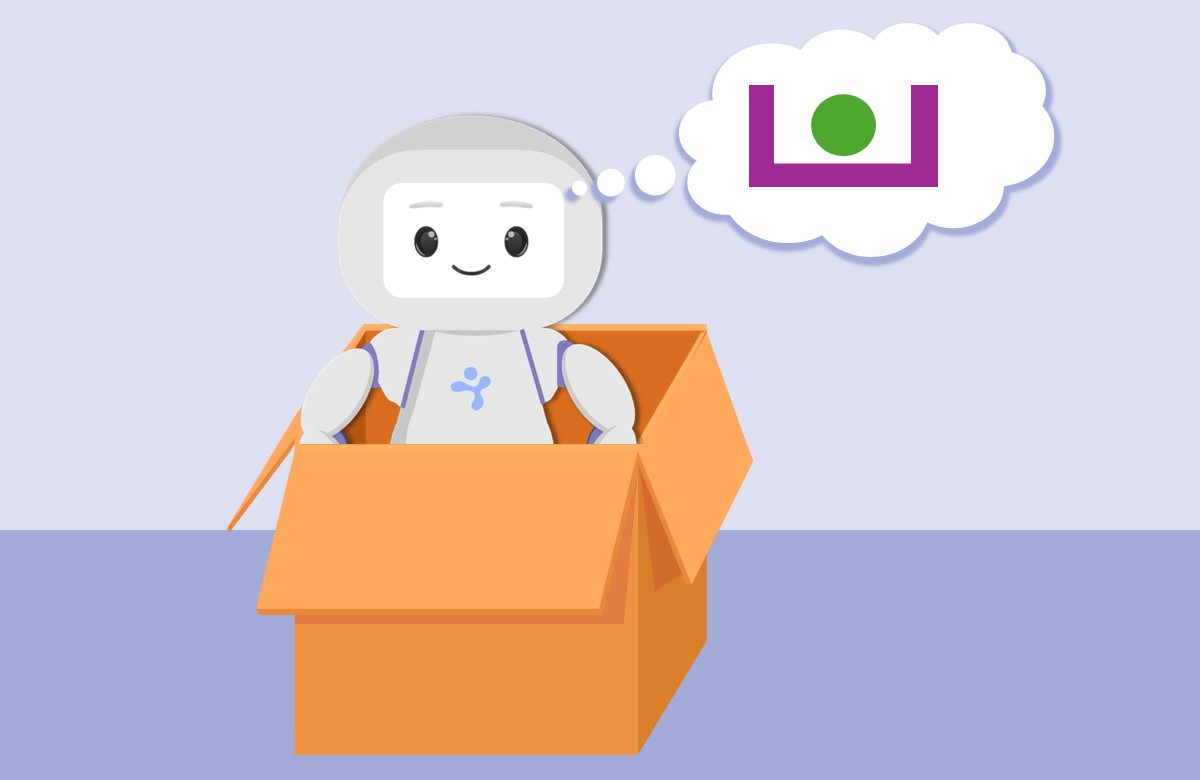
Expressive Language, Level 4, Unit 7 - Labeling spatial concepts (in-on)
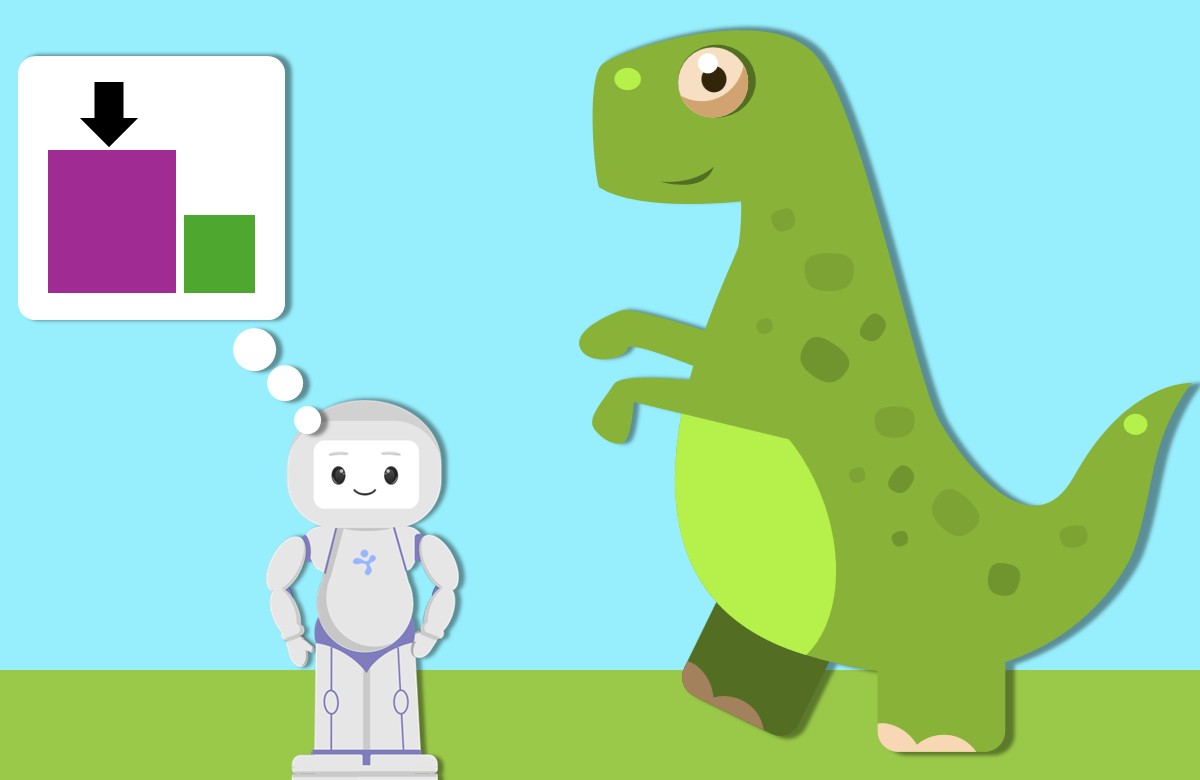
Receptive Language, Level 3, Unit 9 - Discrimination of size
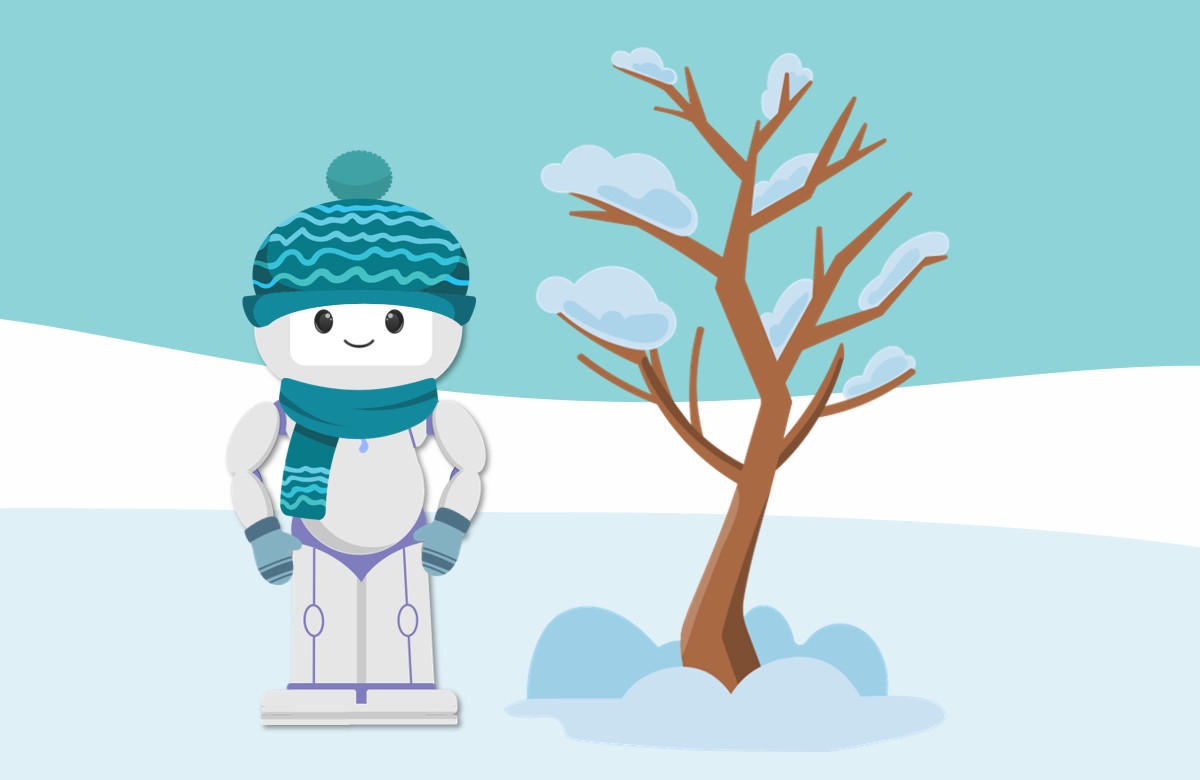
Expressive Language, Level 5, Unit 5 - Labelling seasons and weather elements

Receptive Language, Level 4, Unit 5 - Discrimination of heavy/light
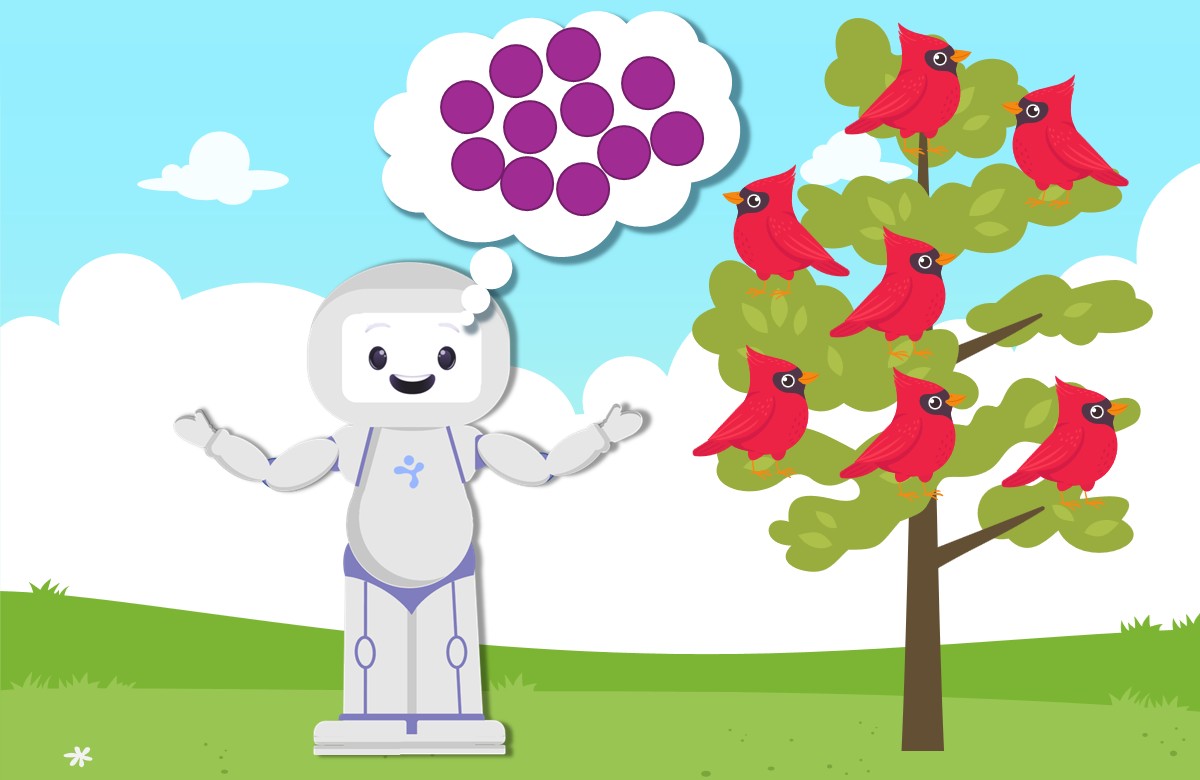
Expressive Language, Level 5, Unit 8 - Labelling few and many
Examples of Cognitive Development and Math Activities Included in the QTrobot Early Stage Development Curriculum

Cognitive Skills, Level 2, Unit 2 - Matching by shape
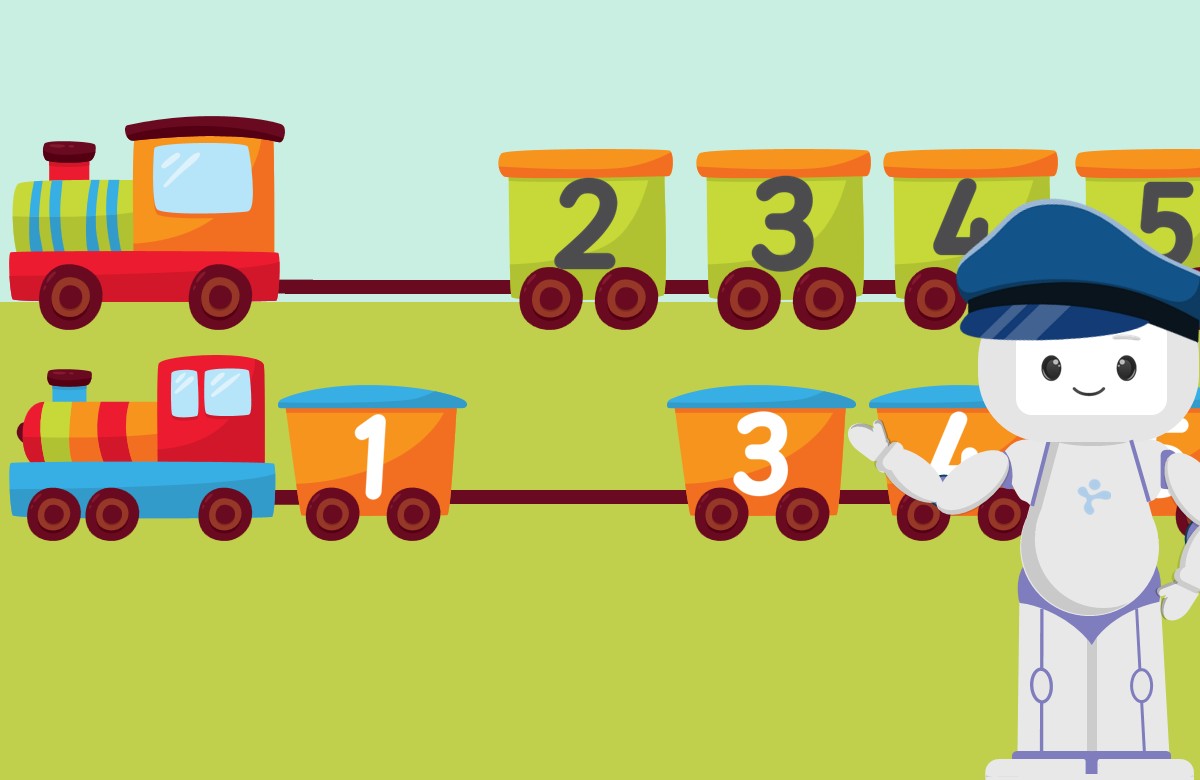
Math, Level 5, Unit 4 - Identification of missing numbers
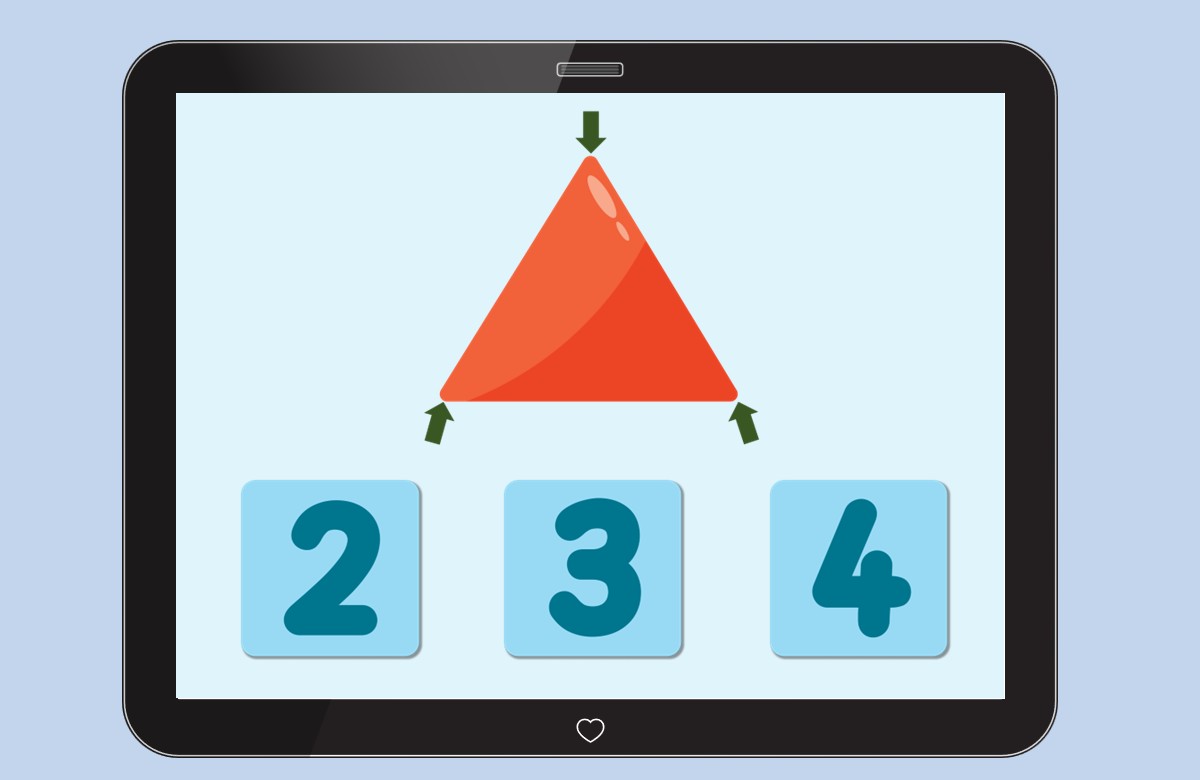
Math, Level 3, Unit 6 - Counting the angles of 2D shapes
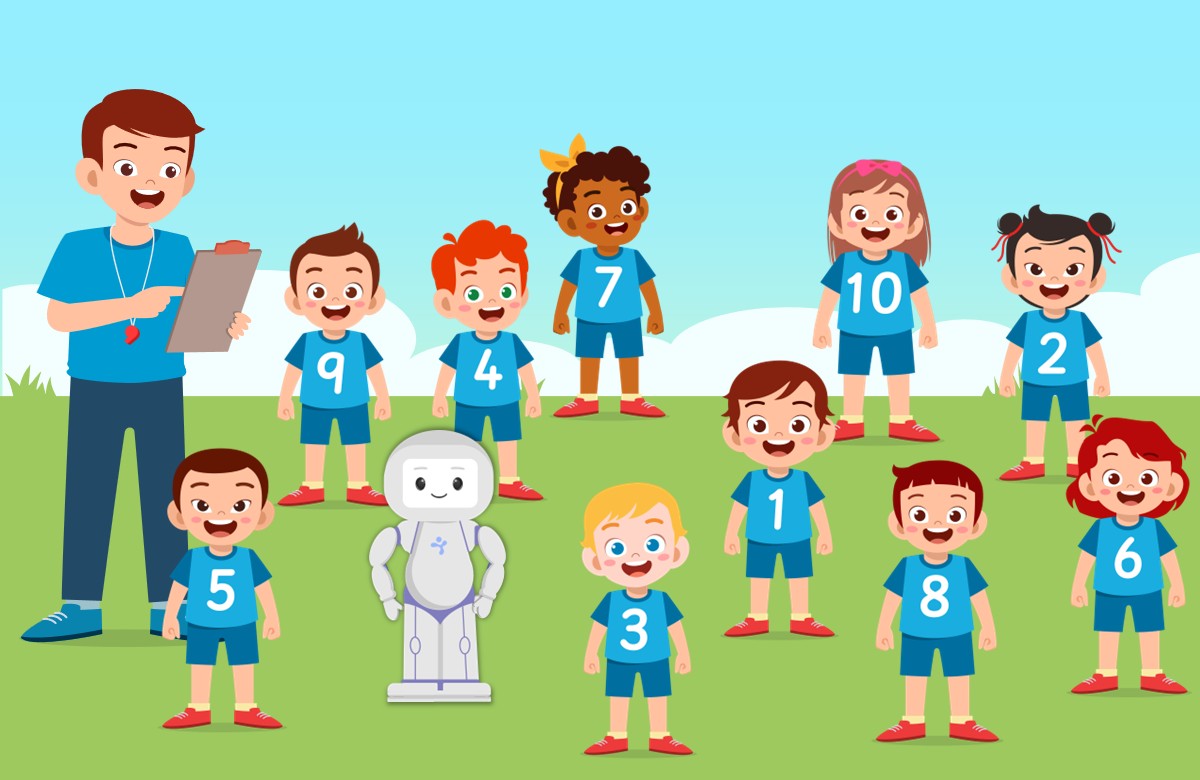
Math, Level 5, Unit 8 - Putting numbers in order
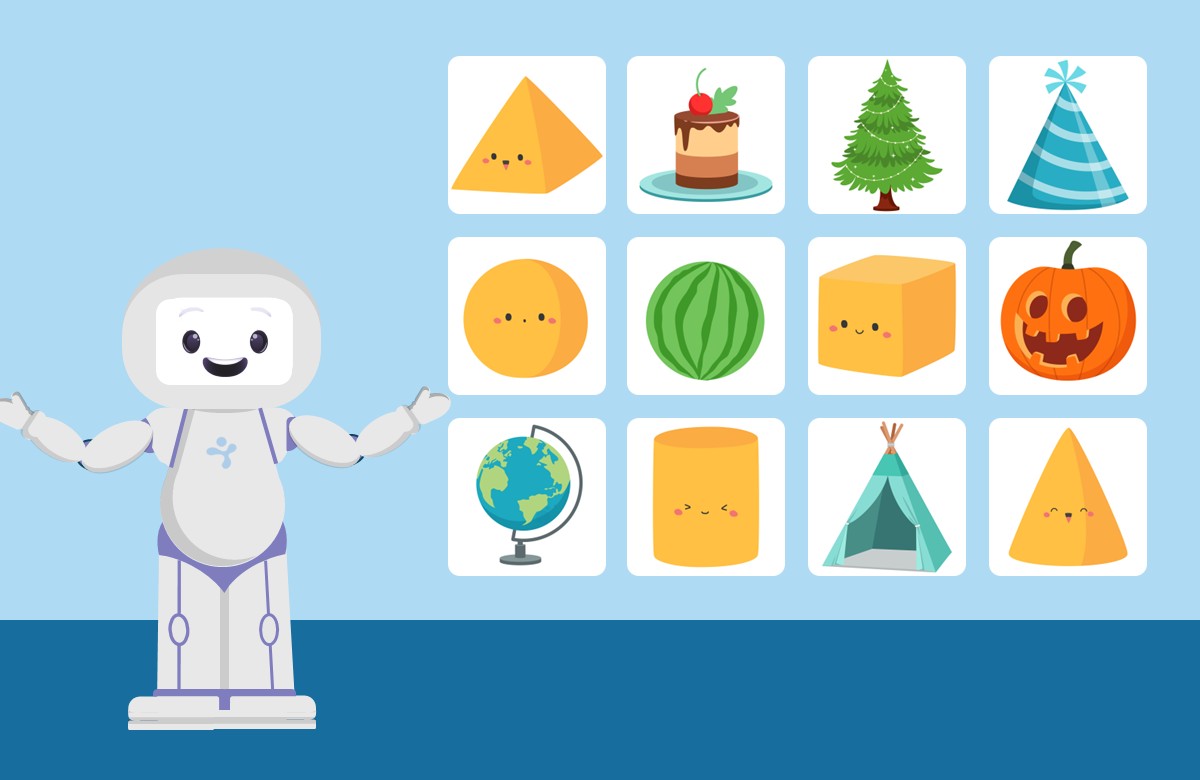
Math, Level 5, Unit 5 - Matching based on 3D shape
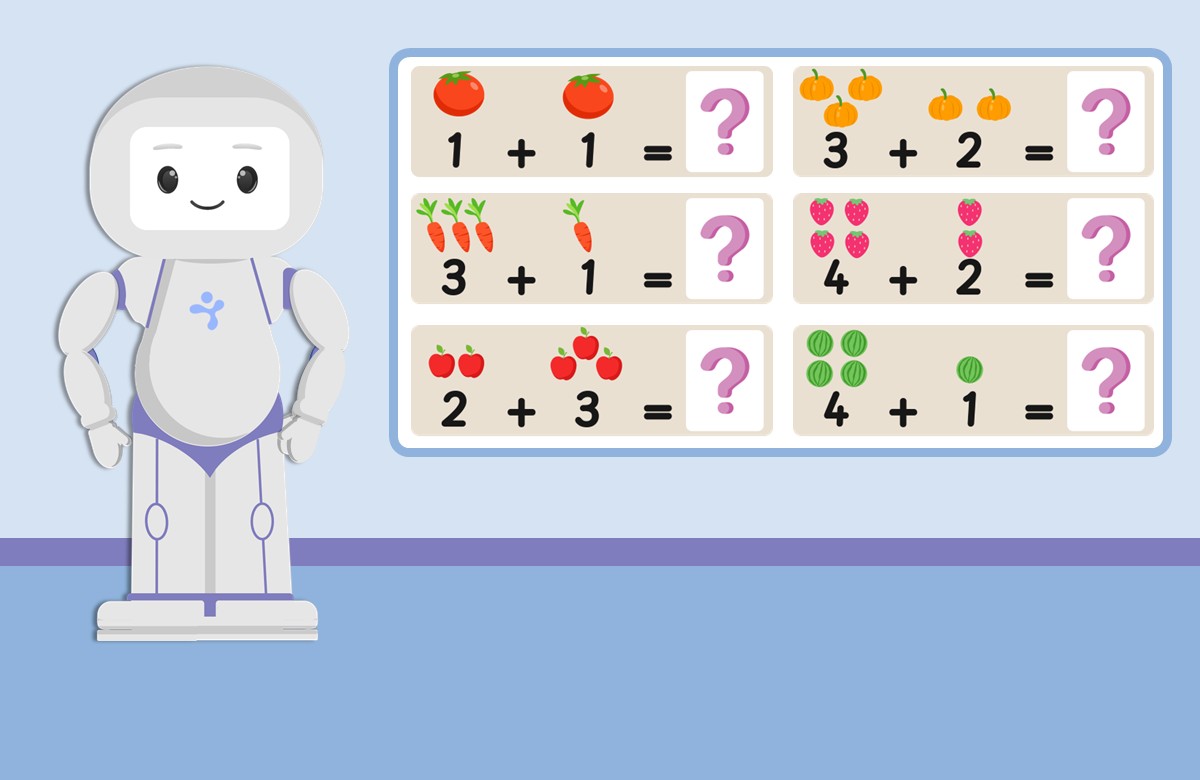
Math, Level 5, Unit 11 - Basic Addition
You can find the lessons covered by QTrobot Early Stage Development curriculum For autism and SEN here:
Level 1: Developmental age of 0-18 months
Social skills:
Unit 1 – Joint attention
Unit 2 – Gross motor imitation
Unit 3 – Imitation of one-step action on objects
Unit 4 – Imitation of facial movements
Unit 5 – Imitation of sounds
Receptive Language:
Unit 1 – Identification of common objects
Unit 2 – Identification of colors
Unit 3 – Identification of shapes
Unit 4 – Identification of animals
Cognitive Skills:
Unit 1 – Matching identical common objects
Unit 2 – Matching colors
Unit 3 – Matching shapes
Unit 4 – Matching animals
Level 2: Developmental age of 18-24 months
Social skills:
Unit 1 – Multi-step imitation in dance moves
Unit 2 – Imitation of animal sounds
Unit 3 – Respond to greeting by waving and saying hi
Unit4 – Pretend play on self
Unit 5 – Pretend play on objects
Unit 6 – Simple turn-taking and sharing
Unit 7 – Following one-step directions
Unit 8 – Understanding stop and wait signs
Receptive Language:
Unit 1 – Identification of body parts
Unit 2 – Identification of food
Unit 3 – Identification of kitchen tools
Unit 4 – Identification of toys
Unit 5 – Answering Yes/No questions for common items
Unit 6 – Identification based on sounds
Expressive Language:
Unit 1 – Naming and labelling colors
Unit 2 – Naming and labelling shapes
Unit 3 – Naming and labelling animals
Cognitive Skills:
Unit 1 – Matching by color
Unit 2 – Matching by shape
Unit 3 – Matching by size
Unit 4 – Sorting to similar
Unit 5 – Counting 1 to 3
Unit 6 – Matching by quantity of 1 to 3
Level 3: Developmental age of 25-36 months
Social skills:
Unit 1 – Answering basic social questions
Unit 2 – Advanced pretend play
Receptive Language:
Unit 1 – Identification of clothes
Unit 2 – Identification of bathroom items
Unit 3 – Identification of school supply
Unit 4 – Identification of spatial concept propositions (in-on)
Unit 5 – Identification of action verbs
Unit 6 – Discrimination of single/pleural
Unit 7 – Answering WHAT questions based on sounds
Unit 8 – Answering WHAT questions based on function
Unit 9 – Discrimination of size
Unit 10 – Identification based on the combination of 2 adjectives (shape&color)
Expressive Language:
Unit 1 – Naming and labelling body parts
Unit 2 – Naming and labelling food
Unit 3 – Naming and labelling kitchen items
Unit 4 – Naming and labelling toys
Unit 5 – Yes/No answer to simple questions
Unit 6 – Naming and labelling in response to sounds
Cognitive Skills:
Unit 1 – Matching letters
Unit 2 – Matching number signs
Unit 3 – Counting to 5
Unit 4 – Sorting to function groups
Unit 5 – Basic sequencing
Level 4: Developmental age of 37-48 months
Social skills:
Unit 1 – Basic greeting
Unit 2 – Personal distance
Unit 3 – Non-verbal greeting postures
Unit 4 – Alternative greetings
Unit 5 – Turn-taking in choosing a game
Unit 6 – Answering social questions
Unit 7 – Following directions in drawing and tracing
Receptive Language:
Unit 1 – Identification and discrimination of hot/cold
Unit 2 – Identification and discrimination of tall/short
Unit 3 – Identification and discrimination of wet/dry
Unit 4 – Identification and discrimination of long/short
Unit 5 – Identification and discrimination of heavy/light
Unit 6 – Identification based on two attributes (Size&Color)
Unit 7 – Identification and discrimination of gender
Unit 8 – Identification and discrimination of few/many
Unit 9 – Comparative (understanding -er)
Unit 10 – Understanding negative concept (not+verb)
Unit 11 – Spatial concept propositions (in front/behind)
Unit 12 – Answering simple WHAT questions based on story
Unit 13 – Answering simple WHO questions based on story
Unit 14 – Identification and discrimination of same/different
Unit 15 – Identification based on features of the items
Unit 16 – Identification and discrimination of fast/slow
Unit 17 – Answering WHAT questions for basic needs
Expressive Language:
Unit 1 – Naming and labelling clothes
Unit 2 – Naming and labelling bathroom items
Unit 3 – Naming and labelling school supply
Unit 4 – Naming and labelling action verbs
Unit 5 – Answering WHAT questions based on sounds
Unit 6 – Answering WHAT questions based on function
Unit 7 – Labeling spatial concepts (in-on)
Cognitive Skills:
Unit 1 – Sorting to function groups
Unit 2 – Counting to 10
Unit 3 – Choosing based on quantity of 1-10
Unit 4 – reading universal signs
